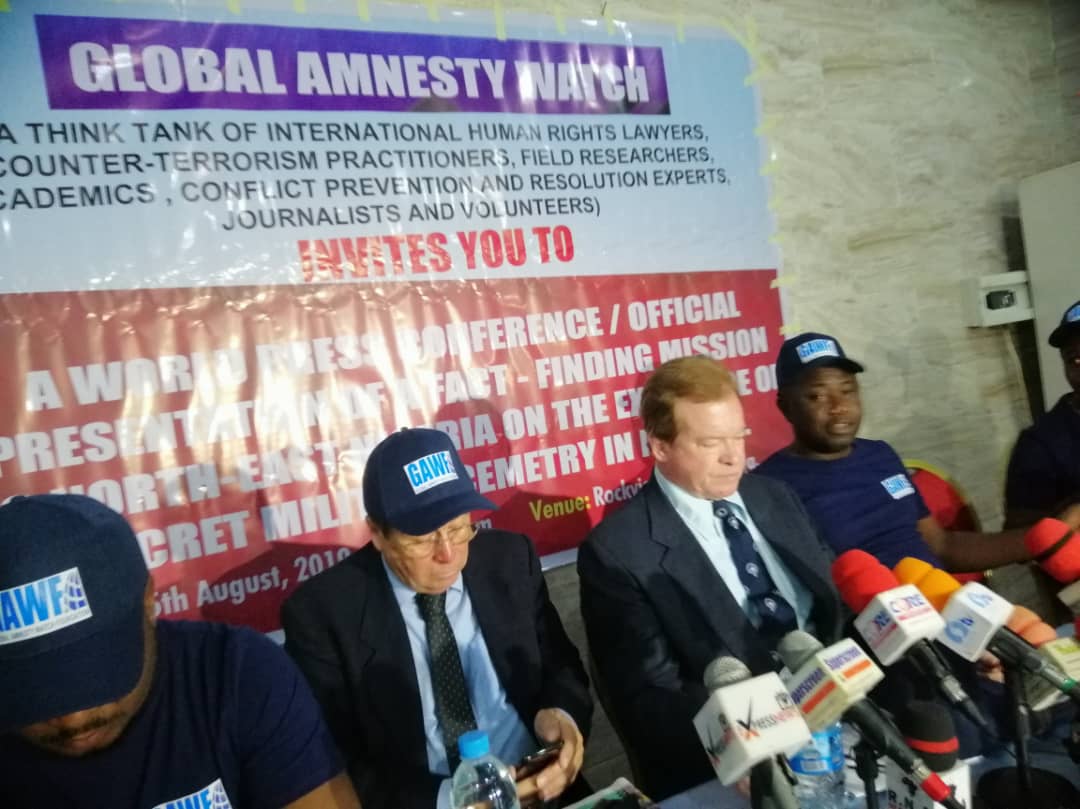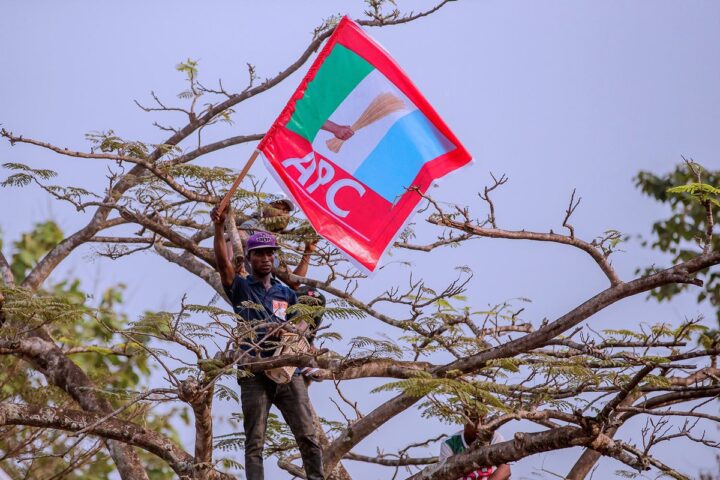The Global Amnesty Watch says it is not true that the Nigerian military has a secret cemetery in Borno state.
The group consisting of human rights lawyers, humanitarian workers, journalists, academics among others, said this at a public presentation of its two-week research.
The programme held in Abuja on Friday.
The team said it embarked on the mission armed with all the necessary support from the relevant stakeholders, facilitating access to Mailamari barracks, public and military morgues, as well as unhindered access to military personnel and their families in Maimalari barracks.
Advertisement
On completion of this exercise, the group said its findings are not in line with the realities on the ground.
“The global amnesty watch in collaboration with critical stakeholders embarked on a verification mission to northeast Nigeria under the auspices of a fact-finding committee of the global amnesty watch visited north-east Nigeria starting from strategically select communities in northern and southern Borno state, perceived as the hotbed in the ongoing battle against Boko Haram/ISWAP fighters,” the report read.
“The team was also mandated to visit other select communities where heavy casualties have been recorded since the fight against Boko Haram in Nigeria started. The idea was to have first-hand information in an attempt to leave the realm of speculation.
Advertisement
“The team was also charged with the responsibility of interacting with stakeholders in areas visited such as traditional rulers, community rulers, members of civilian task force (JTF), government agencies, non-governmental Organizations, IDPs, primary healthcare centres, government hospitals, military hospitals, military personnel’s, officials of local government areas, military cemeteries, public cemeteries, as well as civilians domiciled in the affected communities.
“The team was accompanied by security operatives drawn from the Nigerian army, the Nigerian Police, the civil defence corps, and agents from the department of state security service (DSS).
Method of Data Collection:
“The team employed the use of physical interaction and inspection of places and timeline of events in areas that have been affected in the crisis. The Team also engaged the services of indigenous interpreters to bridge the communication gaps that would arise for seamless interaction. Questionnaires were also designed in such a manner that would elicit objective responses from those to be interviewed. Video recording gadgets, as well as still cameras, were also used to capture events and places in the course of the research.
Advertisement
“The findings were also subjected to a series of cross-examination by a team of experts in research methodology from the University of Maiduguri.
“The report on the existence of mass graves where the army authorities hurriedly buried thousands of military personnel in a bid to cover up for the heavy casualties it suffered in the fight against Boko Haram/ISWAP terrorist in North-East Nigeria.
“The Team of researchers after an extensive review of all the allegations contained in the report of the Wall Street Journal, the Global Amnesty Watch consequently embarked on the mission armed with all the necessary support it can get from the relevant stakeholders who facilitated access to military bases ( Mailamari Barracks), public and military morgues, as well as an unhindered access to military personnel and their families in Maimalari barracks who were granted permission to speak to the Team without fear of victimization from the military authorities.
“The Team upon an extensive survey of Maimalari Barracks and its environs could not establish places where the secret grave is located as there were no signs of new earthwork in the area earmarked as the burial site for military personnel killed in the battlefront. The only sign of earthwork was dated June 2018 on about 20 graves with the names of the soldiers inscribed on a wooden plate stating the date of burial and name.
Advertisement
“The large portion of the site had been taken over by grasses as there were no signs of a pathway or recent excavation of the ground to suggest that mass burials had taken place in recent times.”
Advertisement
Add a comment





